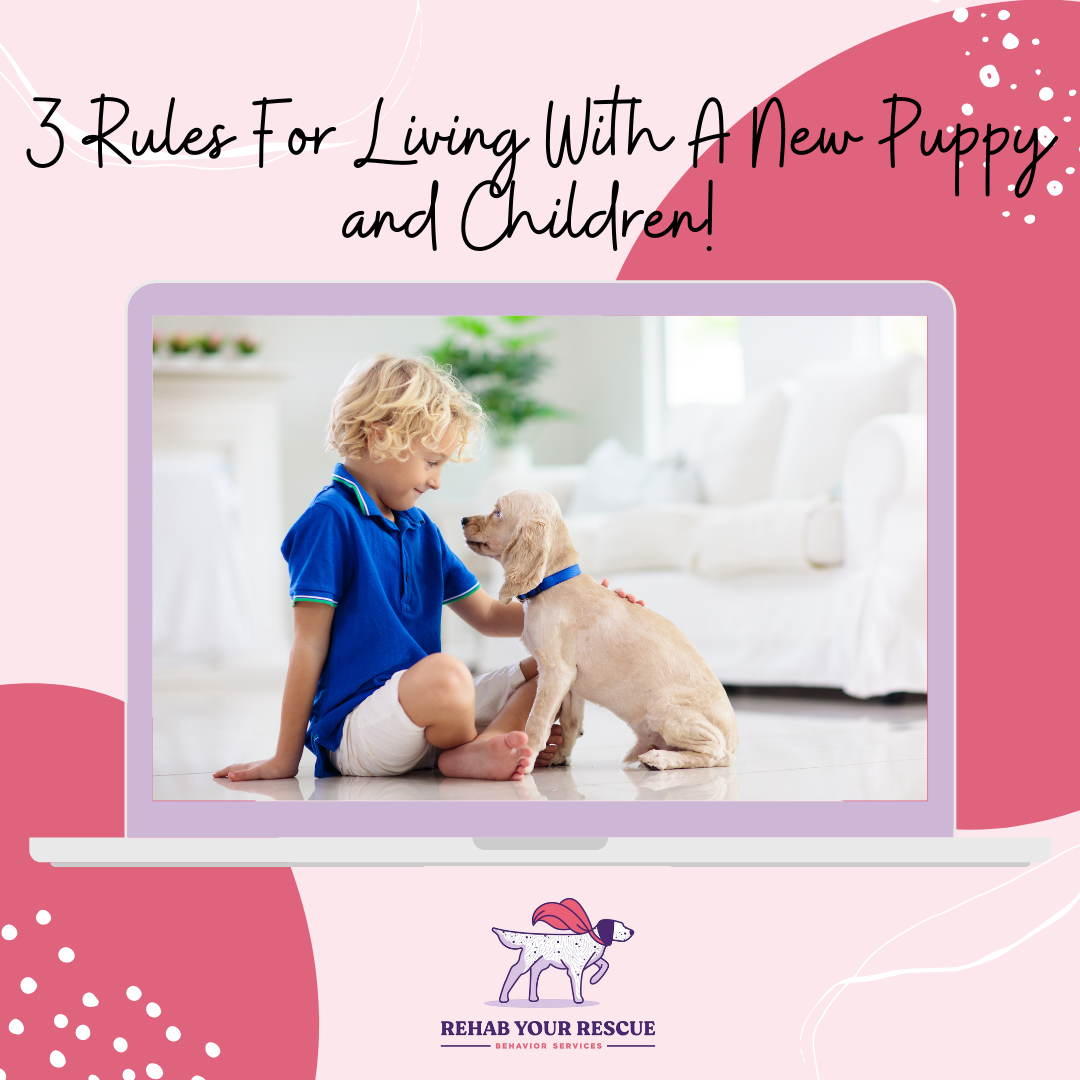3 rules for living with children and a new puppy
Some of you may be bringing home or have already brought home a new puppy into a household with children or toddlers. While this can be a really rewarding and exciting experience for kids, we want to make sure both they and your puppy are set up for a healthy, safe long-term relationship together. The precedents we set now for our children and dogs will help carry over into the rest of their life. There are TONS of different new aspects to raising a puppy in a home with children, but these are the top three pieces of advice we find ourselves giving the most:
1. When a parent cannot ACTIVELY supervise interactions, puppies and children should be separated by at least 1 level of management.
When we say active supervision, we mean eyes are on the child and puppy, and nothing else is drawing your attention away. If you're working on something else, watching TV, needing to periodically leave the room, etc, this is not active supervision and still leaves plenty of room for issues to arise. We need to make sure the puppy and children are having only positive, safe experiences with each other at this stage and if you are not paying full attention at all times, you cannot guarantee that you can intervene when needed. Use baby gates to divide the home, crates, play pens, or leashes to tether your puppy to you when you can't actively supervise.
2. Meal time is alone time. This includes enrichment items or favorite chews!
There's outdated advice out there that messing with your puppy, taking their food bowl, or touching them all over is a means to prevent an adult dog that guards their food and favorite chews/objects. We now know this advice to have the opposite effect, and may actually CREATE guarding issues if your puppy is constantly taunted and made to feel insecure any time you or your children are around their valued items. This is a very common time that people claim to see a bite happen "out of nowhere!" We don't want your puppy to start associating your children being in proximity to their items with bad things happening to them, so as a general rule of thumb we recommend that the puppy is fed alone where they can eat in peace, including food puzzles, kongs, chews, etc. Feed your puppy in a crate, pen, or separate room, and have a conversation with your children about leaving the puppy alone when it's time to eat to make sure they grow up feeling safe and comfortable with a lower likelihood to start resource guarding.
3. When puppies and kids do interact, it needs to be on the dog's terms!
From day one of bringing your puppy home, start teaching your kids the right way to play with and interact with their puppy. It's obviously quite exciting to have a new puppy in the house, and your kids will likely want to scoop him up, carry him around everywhere, and run up to him and get in his face to give him all the kisses in the world. However, for many puppies these kinds of interactions can be scary, and may cause defensive, reactive behavior that will worsen with time as they continue to not be listened to. Teach your children how to invite the puppy over to them for interactions, instead of having them walk up to the puppy and invade his space. Children will catch on to this quickly if you show them the right way! Have your child learn how to sit in a chair (or on the ground depending on the size of the puppy) and pat their leg, talking nicely to the puppy to invite him over to come play or interact. If the puppy comes, great! If he doesn't, that's his way of saying no thank you, and this is a good time to redirect your child onto another activity until the puppy wants to interact another time. We should also make sure interactions between the puppy and child are "low arousal" interactions, meaning the puppy isn't getting jazzed up and overly excited by the child. Instead of rough play, rolling all round on the floor together, have your child participate in teaching your puppy some new tricks (sit, down, touch, spin, etc), read a book to your puppy, or participate in independent activities while together. This could be something like going out in the yard and letting your puppy sniff and explore while your child does a calm activity.
The more you can set precedents and advocate for your puppy when bringing them home, the better the relationship your child and adult dog will have, and the safer you can keep all the members of your household! The best way to address problem behaviors is to prevent them in the first place; When it comes to puppies and children, it never hurts to be more safe than sorry!

